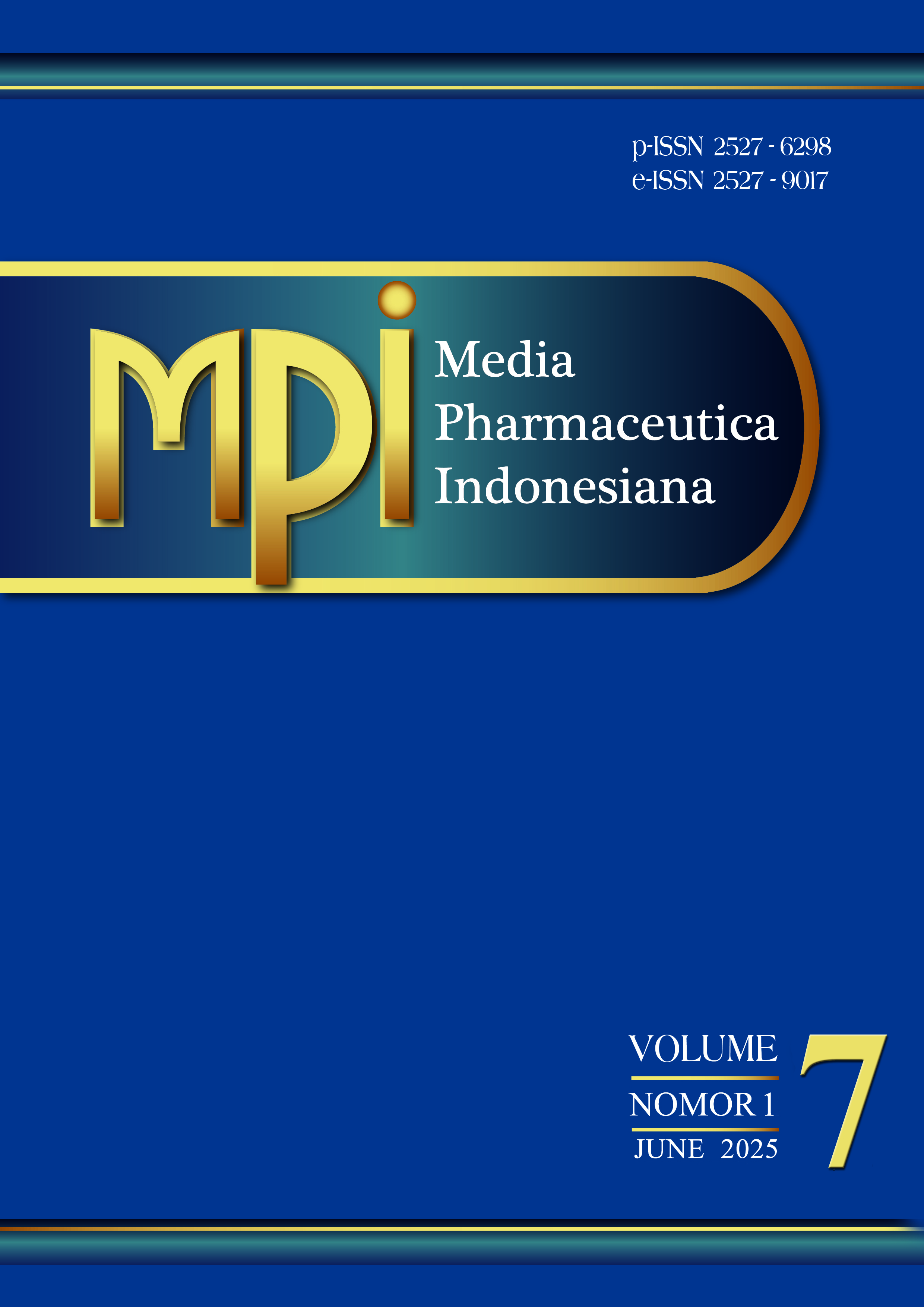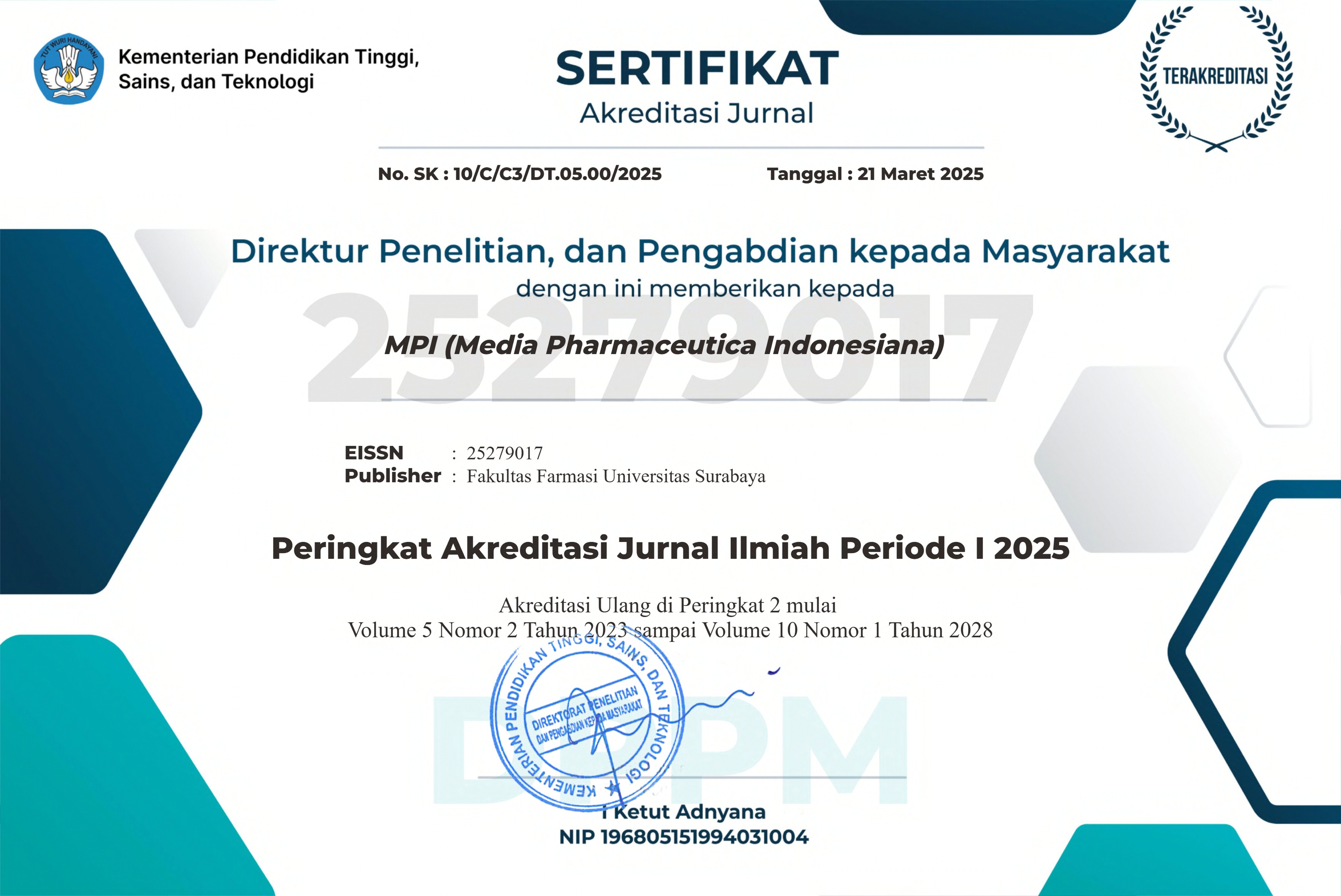Efek Rasio Minyak dan Rimpang Jahe (Zingiber Officinale Rosc) terhadap Laju Reaksi Antiinflamasi Minyak Urut Tradisional dari Minyak Jelantah Teradsorpsi
 Abstract Views:
316 times
Abstract Views:
316 times
 PDF Downloads:
219 times
PDF Downloads:
219 times
Abstract
Minyak jahe mengandung sejumlah minyak atsiri yang diketahui memiliki efek anti inflamasi. Minyak atsiri dapat diperoleh dengan cara adsorpsi rimpang jahe menggunakan minyak jelantah teradsorpsi. Rasio rimpang dengan pelarut dapat mempengaruhi jumlah minyak atsiri yang dihasilkan serta kecepatan reaksi anti inflamasi. Tujuan dari penelitian ini yaitu melakukan optimasi waktu kontak dan formula minyak urut dengan berbagai rasio minyak jelantah dan rimpang jahe untuk menghasilkan kualitas minyak urut terbaik berdasarkan kandungan metabolit yang diperoleh, serta mengidentifikasi karakteristik kinetika reaksi terhadap efek anti inflamasinya. Metode analisis kandungan senyawa minyak urut pada penelitian ini menggunakan GC-MS, efek anti inflamasi diukur dengan pengukuran volume inflamasi pada hewan uji, dan analisis kinetika dengan pendekatan model arrhenius. Peningkatan waktu kontak minyak jelantah dengan rimpang jahe menghasilkan 4 komponen yaitu asam oleat, camphene, eucalyptol dan gingerol yang meningkat seiring bertambahnya waktu kontak dengan orde reaksi 1. Perbedaan rasio minyak jelantah dan waktu kontak dengan rimpang jahe menghasilkan perbedaan kandungan minyak jahe yang diadsorpsi dengan nilai orde reaksi 1 untuk formula minyak urut. Hasil menunjukkan bahwa adsorpsi minyak jahe menggunakan minyak jelantah mampu meningkatkan kualitas minyak urut dengan membandingkan waktu kontak dan rasio minyak jelantah.
Ginger oil contains a number of essential oils that are known to have anti-inflammatory effects. Essential oils can be obtained by adsorbing ginger rhizomes using adsorbed used cooking oil (UsO). The yield of essential oils can be affected by the ratio of solvents and ginger rhizomes used along with the rate of anti-inflammatory reactions. The objective of this research was to optimize the contact time and formula of massage oil with various ratios of UsO and ginger rhizome to produce the best-quality massage oil based on the metabolite content obtained, as well as to identify the reaction kinetics characteristics related to its anti-inflammatory effects. The method of analyzing the content of massage oil compounds in this study used GC-MS, with the anti-inflammatory effect measured by assessing the volume of inflammation in test animals, and the kinetic analysis carried out using the Arrhenius model approach. The increase in the contact time of UsO with ginger rhizomes produces 4 components, namely oleic acid, camphene, eucalyptol and gingerol which increase with the increase in contact time with reaction order 1. The difference in the ratio of UsO and the contact time with the ginger rhizome resulted in a difference in the content of adsorbed ginger oil with a reaction order value of 1 for the massage oil formula. The results showed that the adsorption of ginger oil using Uso was able to improve the quality of massage oil by comparing the contact time and ratio of used cooking oil.
Submitted: 07-01-2025, Revised: 28-03-2025, Accepted: 08-05-2025, Published regularly: June 2025
Downloads

This work is licensed under a Creative Commons Attribution-ShareAlike 4.0 International License.
Articles published in MPI are licensed under a Creative Commons Attribution-ShareAlike 4.0 International (CC BY-SA) license. You are free to copy, transform, or redistribute articles for any lawful purpose in any medium, provided you give appropriate credit to the original author(s) and MPI, link to the license, indicate if changes were made, and redistribute any derivative work under the same license.
Copyright on articles is retained by the respective author(s), without restrictions. A non-exclusive license is granted to MPI to publish the article and identify itself as its original publisher, along with the commercial right to include the article in a hardcopy issue for sale to libraries and individuals.
By publishing in MPI, authors grant any third party the right to use their article to the extent provided by the CC BY-SA license.

 DOI:
DOI:










